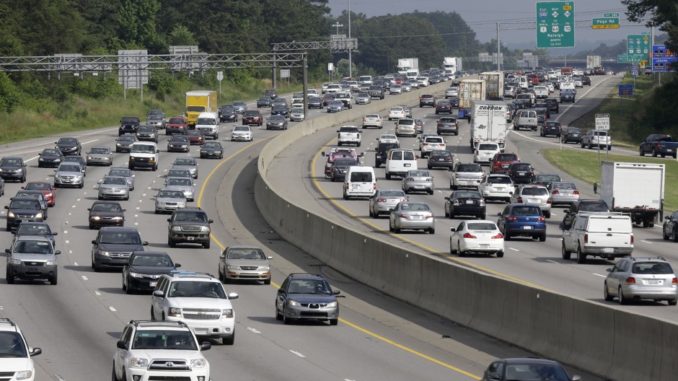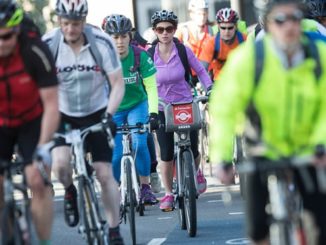
Behavioral science strategies like offering prizes are getting people into public transit.
There are 19,000 parking spots in downtown Durham, North Carolina, and an estimated 3,700 more on the way to satisfy driver demand. But if the city can help it, drivers could be “nudged” out of taking a car solo to the urban core.
Durham was one of nine American cities that won $1 million from the Bloomberg Philanthropies’ U.S. Mayors’ Challenge, announced on Monday at CityLab Detroit. Over the next three years, the city will use the money to try to shift downtown commuters out of their cars, with a touch of behavioral science.
Partnering with several large employers, Durham tested two such strategies on more than 1,500 downtown workers over a period of six months earlier this year. The goal was fairly modest: to cut down single-person vehicle trips into the city’s core by 5 percent. With one program, the city emailed personalized route maps from individuals’ home to work addresses (which participants provided by opting in) that showed routes by bike, a GoDurham bus, and walking, compared to driving. The emails also included trip time comparisons and listed the potential benefits of alternatives to solo driving, including the weight loss potential, the savings in gas money, and the time commuters could reclaim from the city’s infamous traffic. “Driving downtown is so 2017,” the maps said.
The second strategy was more classic economics: The city hosted a bus lottery for a group of its own employees, in which riding the bus to work made them eligible for a $163 weekly cash prize. Both approaches borrowed from the “nudge” theory of behavioral science—the notion that providing positive reinforcement and indirect hints can get people to shift decisions in a more desirable direction.
Behavioral science researchers from Duke University worked with city leaders to inform the types of “carrots” that commuters were offered. People generally intend to behave in ways that they know are good for society, but old habits get in the way, explained Joseph Sherlock, an applied behavioral researcher at the university’s Center for Advanced Hindsight who worked with city officials to shape the programs. “The personalized routes help reduce the barrier between intention and behavior, and makes it easier for us to follow through on behavior we want to do,” Sherlock said. And with the lottery, “humans have an amazing ability to think we have a bigger chance than we do. So we just took that insight and applied that to trying to encourage a pro-social behavior.”
According to Mayor Steve Schewel, the results exceeded the original goal. The share of commuters who reported driving to work alone was 12 percent lower among those who received the alternate commute maps than those who didn’t, according to post-mortem participant surveys. And the solo-driving share dropped by 16 percent among those who received the maps and took transit for prizes. Overall, the incentives cut back single-driver vehicle trips among the participants by more than five percent.
With the new $1 million prize, Durham will try to scale up these or other behavioral strategies to reduce downtown solo driving by five percent across the entire city population. Schewel believes this should be getting easier and easier to do. “We’re hopeful about building light rail soon, we’re improving our bus system a lot, and there’s all these other players, like the scooters, that are coming in,” he said.
Why cut back on driving? First, there’s an economic rationale: It’s expensive to keep building more parking. As of 2012, the average construction cost of an above-ground parking spot in major American cities was $2,400. Durham would like to avoid pouring more money into those, Schewel explained, especially as the population booms, and since autonomous vehicles may eventually eliminate the need for parking entirely. “Our employers still want a lot more parking than there is,” he said. “So while we’re in this interesting period of transition in terms of transportation, we have to do the best we can to avoid these parking decks that will eventually be white elephants anyways.”
Then there are the arguably far more important reasons: Reducing driving means reducing emissions, as part of the city’s climate goals. And it’s a matter of quality of life, the mayor added: No one likes to sit in congestion.
Source: https://www.citylab.com/transportation/2018/10/durhams-plan-to-nudge-drivers-out-of-cars/574264/
Visits: 20


Be the first to comment